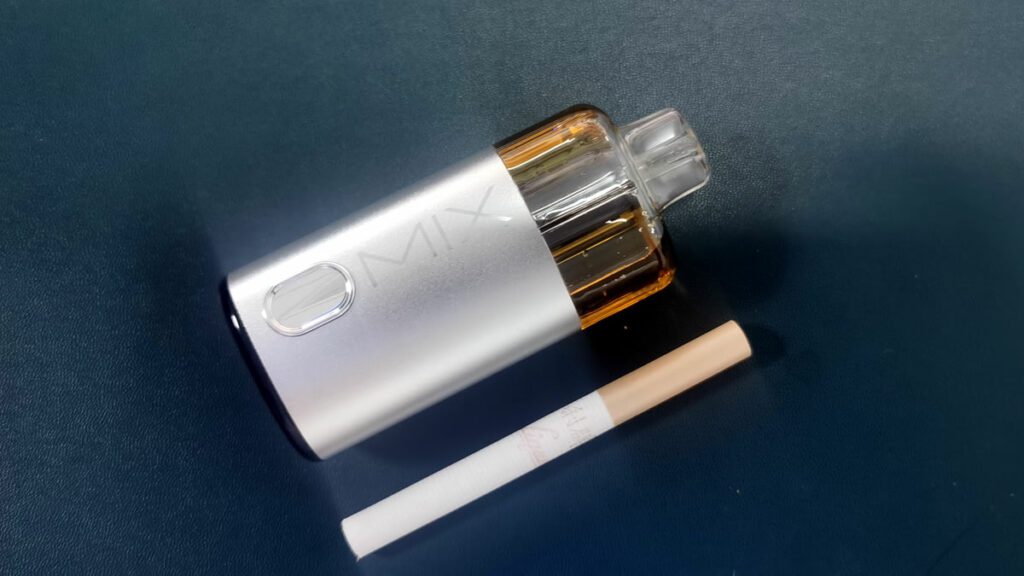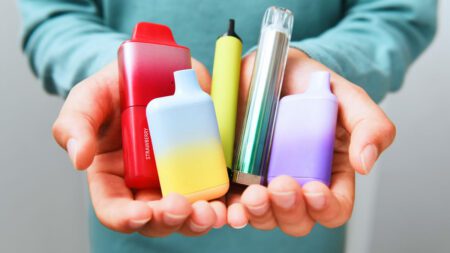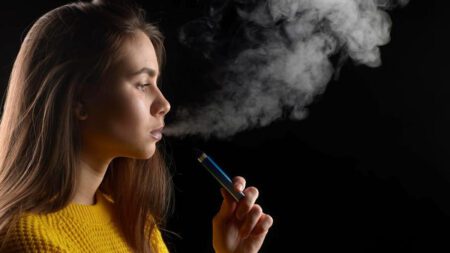In recent years, vaping has become increasingly popular, particularly among youth and young adults. However, this trend has not come without its share of concerns. Dr. Pamela Ling, Professor of Medicine and Director of the Center for Tobacco Control Research and Education at the University of California, San Francisco (UCSF), has been at the forefront of uncovering alarming trends in the vaping industry. Her research, which involves analyzing Big Tobacco's internal documents housed at UCSF, has shed light on the staggering nicotine content in vapes and the industry's marketing tactics that have contributed to the current youth vaping epidemic in the United States.
The Prevalence of Vaping and the Appeal of Flavored Vapes
According to recent data, more than 1.6 million U.S. middle and high school students reported vaping in 2023, with nearly 90% of them using flavored vapes. This high prevalence of vaping among youth may not be a coincidence. Dr. Ling's research suggests that Big Tobacco, which owns many of the top vape manufacturers, has been employing targeted marketing strategies to attract young users.
One of the key factors that make vapes appealing to youth is the wide variety of flavors available. Vapes come in thousands of enticing flavors, ranging from fruity and sweet options like bubble gum and crème brûlée to more unconventional choices like chicken and waffles. These flavors can pique the curiosity of teens who may not initially be interested in nicotine, but the efficient nicotine delivery of vapes can quickly lead to addiction.
The Alarming Increase in Nicotine Content
One of the most concerning findings from Dr. Ling's research is the significant increase in the nicotine content of vapes over the past decade. Nearly a decade ago, the average vape cartridge contained nicotine equivalent to about a pack of cigarettes, which is roughly 20 cigarettes. However, popular vapes today can easily have the nicotine content of three cartons, or 600 cigarettes.
This increase in potency is made possible by the addition of acids to create "nicotine salts." These nicotine salts reduce adverse reactions like throat burning and coughing, making it easier for users to inhale higher concentrations of nicotine without experiencing discomfort. As a result, vapes have become more addictive than ever before.
The Uncertainty Surrounding Vaping Safety
When it comes to the safety of vaping compared to smoking cigarettes, there is still a great deal of uncertainty. While some evidence suggests that vaping may expose users to fewer chemicals and toxins than smoking, the long-term effects on health remain unclear.
Observational studies have found that the risk of lung disease associated with vaping seems to be reduced compared to cigarettes. However, the risks for cardiovascular disease appear to be similar between vaping and smoking. Additionally, it is too early to have definitive data on whether vaping causes less lung cancer than cigarettes due to the long latency period of the disease, which can take 10 to 20 years to develop.
The Impact on Youth and Young Adults
The high rates of vaping among youth and young adults are particularly worrisome because of the increased risk of nicotine addiction in developing brains. The earlier an individual is exposed to nicotine, the more likely they are to become addicted, as the brain continues to develop until around the age of 25.
Research has shown that teens who vape are three to five times more likely to start smoking cigarettes than their peers who do not vape. Moreover, youth who vape have higher rates of asthma-like respiratory symptoms and report more mental health challenges.
Marketing Tactics and Regulatory Challenges
Dr. Ling's research also delves into how marketing shapes the vaping landscape in America. She notes that vapes have been marketed as pieces of technology to escape the negative connotations young people have towards traditional cigarettes. Vape companies have utilized social media influencers, sponsorships, and giveaways to create a trend and appeal to younger audiences – tactics that are no longer allowed for cigarettes due to regulations.
Despite the FDA's efforts to regulate vapes, the industry has exploited loopholes, and regulations have struggled to keep up with the rapidly evolving market. The FDA must approve all vapes before they can be marketed, but as of now, the agency has only approved 34 vape products out of the hundreds publicly available.
The U.S. Supreme Court is currently grappling with the latest in a series of court cases brought by vape and e-cigarette makers challenging the FDA's authority to regulate these products, further complicating the regulatory landscape.
Unveiling Insights from Big Tobacco Documents
The UCSF Center for Tobacco Control Research and Education is one of the first research bodies to begin analyzing the recently acquired Juul documents, in addition to other companies' collections housed in the Truth Tobacco Industry Documents archive. By examining these papers, researchers aim to uncover how companies' tactics exacerbate health inequalities through targeted marketing, attempts to influence community leaders, and efforts to shape scientific research and policies.
As Dr. Ling and her colleagues continue to investigate the tobacco industry's tactics and their impact on public health, their findings will be crucial in informing future regulations and public health initiatives to combat the ongoing youth vaping epidemic.
Conclusion
The research conducted by Dr. Pamela Ling and her team at UCSF has uncovered alarming trends in the vaping industry, particularly regarding the staggering increase in nicotine content and the targeted marketing tactics employed by Big Tobacco to attract youth and young adults.
As the popularity of vaping continues to grow, particularly among younger populations, it is crucial to address the potential health risks and the regulatory challenges that allow these products to remain easily accessible. By shedding light on the industry's tactics and the true nature of vapes, Dr. Ling's work serves as a call to action for policymakers, public health professionals, and the general public to take decisive steps in combating the youth vaping epidemic.
Only through continued research, stricter regulations, and widespread education can we hope to protect the health and well-being of current and future generations from the potential harms of vaping.








